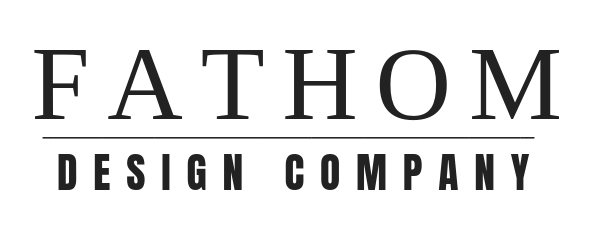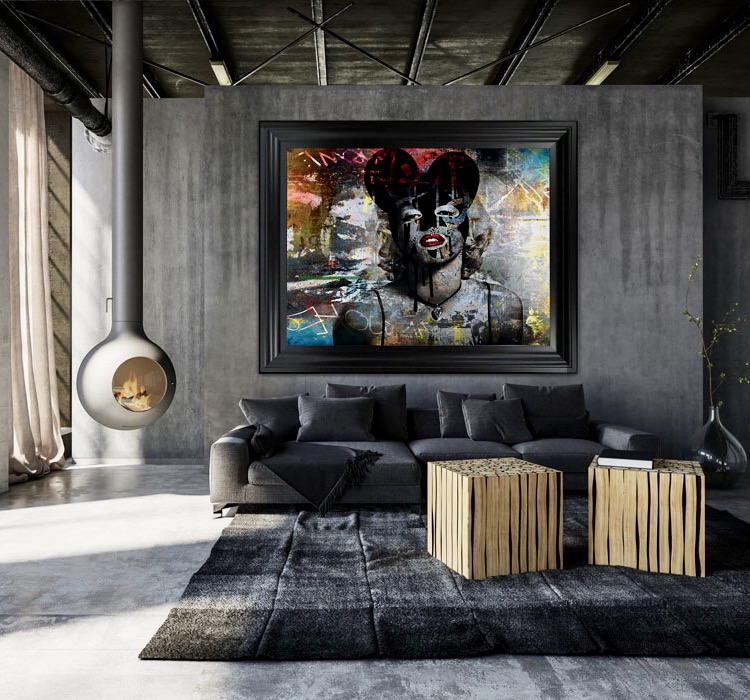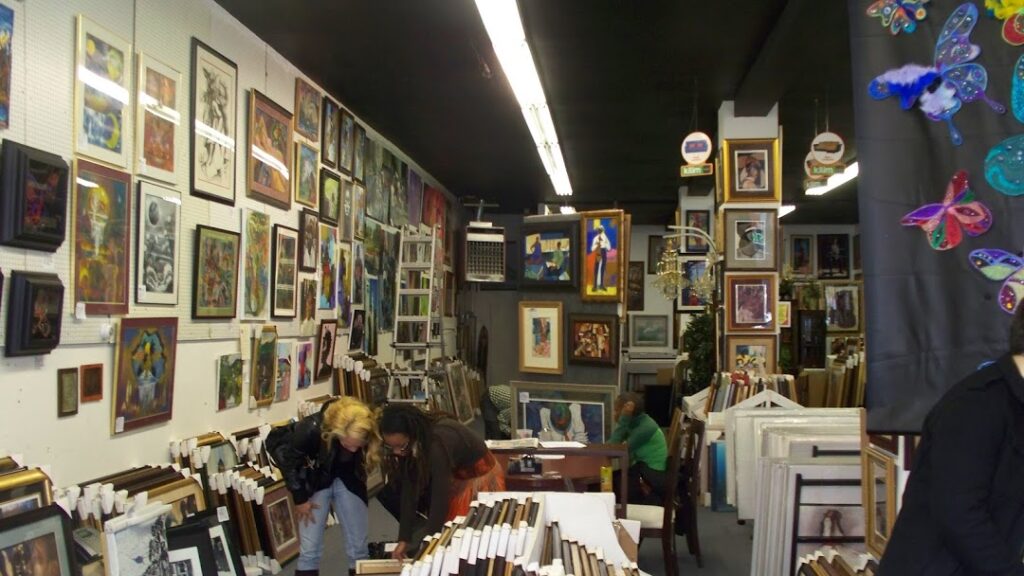
Let’s do an experiment: think about the art in your parents’ house right now. If your parents are super cool ex-hippies or high society, count yourself out of the experiment.
What is the art in your parents’ house like? Is it in any way memorable? Or impactful? Does it have a story? How did they pick their art? Think about your own space. Does your art have a specific purpose other than to fill empty space on a wall? How did you find it?
We have such a strange relationship with art. We will spend weeks looking for the right sofa set and minutes finding some space-filler art to match it.
That’s how art has been used during the last few decades in design. Art has been an afterthought to a design. It’s sole purpose is to fill in empty wall space and tie color schemes together, similar to what we do with pillows. The result is mass produced art that is color coded and fits that need. Many designers are still thinking about art and design in this way.
However, FATHOM believes art’s original purpose should be re-recognized. Art used to be a source of storytelling, of creating impact, and expressing what is important to the viewer, artist, and buyer. That should be reincorporated into the design process for impactful and meaningful spaces that go beyond just aesthetic.
Here are a few tips on how FATHOM designs with art first:
Finding unique, exceptional art:
Step one is too obvious. You need art that is unique, exceptional, and speaks to your client, you (if it’s your space), or the audience (if it’s a commercial space). This should be your first and foremost thought when actually beginning the design process for a space. A great way to source art like this is at local, favorite places and from cultures that speak to your audience. Galleries usually bring in new work every 4-8 weeks so frequenting those is crucial to expanding your palate. Sometimes you don’t know what speaks to you simply because you have been underexposed. It’s important to give time to finding the right art at the beginning of the design process. You or your client may discover that what you thought was important to you and your style is completely different.
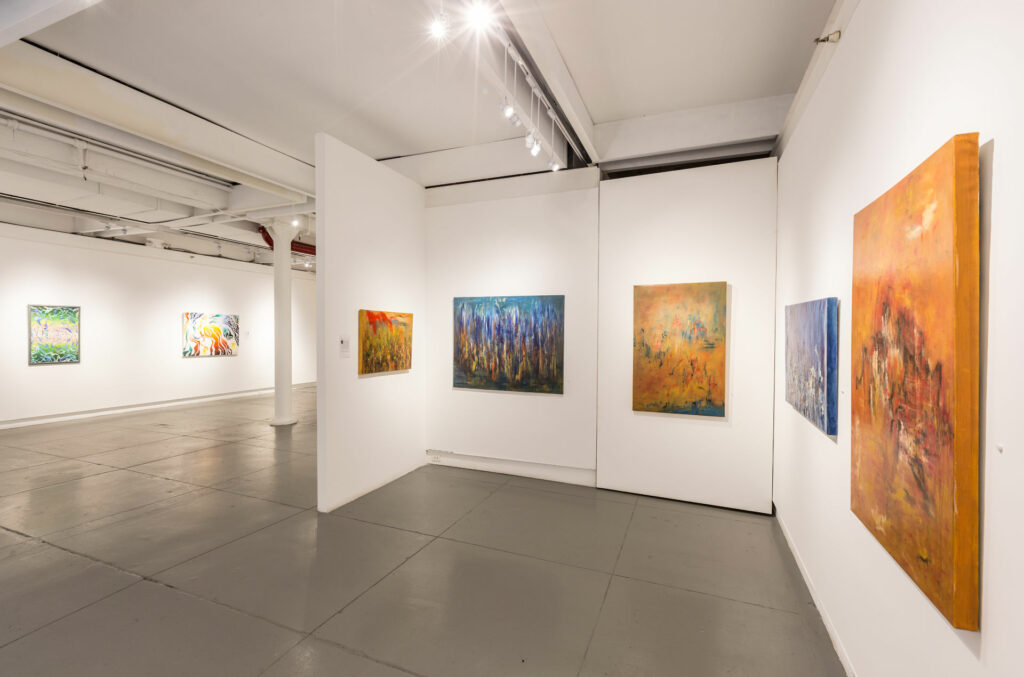
Understanding your client to curate the piece:
In the case that your client is not you, you really need to understand your client to curate the right piece. It will set the mood and meaning for the entire room. It is always about a story, a relationship. The story of your client married to the story of the piece. A connection of personalities, vibrations, energy and history. Get to know what is important to them, what is impactful for them and work to find something that expresses that. Designing from this is foolproof.
Designing a palette that compliments a piece:
It seems counterintuitive, but to design around art you have to branch out from it and support it. The space has to become the backdrop while the art leads. This starts with colors. If the piece is dramatic, pulls a punch or stops you in your tracks, surround it with grounding elements that won’t detract attention. If the piece is simple, understated and soothing, use proper lighting to highlight it while the rest of the space simply “holds” the piece in harmonious colors and textures. You NEVER need to pull colors from the piece and use it elsewhere in the space. So many designers get this part wrong. Meaningful art stands best alone within the room yet apart from it. It takes center stage and needs no backup support with color.
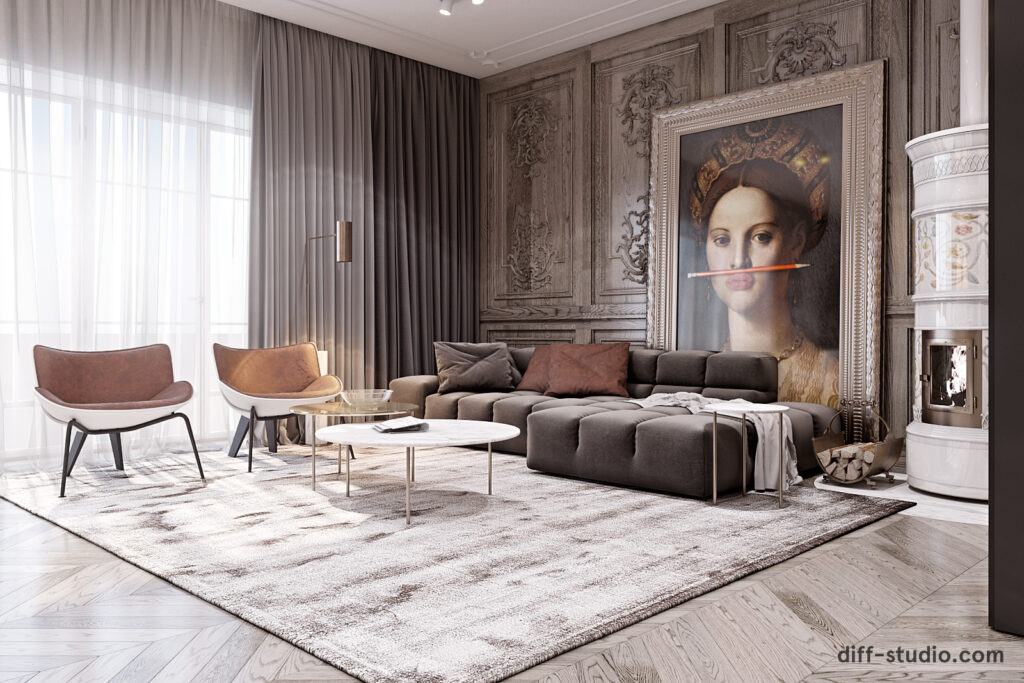
Using art to ground elements of a design:
Art guides the eye and oversees the whole design. Art has the ability to ground parts of a design and serve as a common place for many different elements. It can become a blending pieces that allows you to be more daring and eclectic. For example, simple, structural art can be used to add texture and even architectural elements to a space therefore grounding it in depth of character, texture and personality. Human and animal busts both mounted and as accessories are fabulous pieces for this. Statues are incredibly grounding additions that can bring together many elements and keep the attention in one place.
Art as a conversation piece:
Art has the power, unlike furniture, to spark a conversation and a connection between people. That’s been its purpose for so long. It’s been a way to express ideas, history, hopes, and our dreams and thoughts. It should still hold that purpose and can when used intentionally. Cultural art pieces work to educate and inspire while dispelling subconscious biases, racism and intolerance. Local art supports those closest to you in your community and creates bonds that strengthen the economy in a humanitarian way. It also broadens your perspective of your own intimate culture. Art with a deeper meaning and message is my favorite. It stirs emotion and starts conversations you may not otherwise have. It helps you connect with others in a multidimensional way. Millennials are particularly big on this because it inspires individuality and supports human expression which we crave in our tech-saturated world. Now more than ever, we are connected to artists around the world. Finding art that speaks to you or your client and connecting with those artists is easier than ever.
The process of designing around art and finding that art that resonates with you or your client can be a process of true discovery that helps you create spaces that transcend traditional design to true authentic design.
Want help? We’ve got you. For more on FATHOM’s residential design services and art curation services, contact us.

